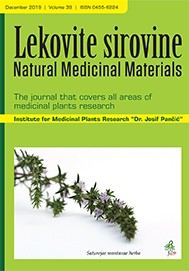Department of Pharmacy, Faculty of Medicine, University of Nis , Niš , Serbia
Department of Pharmacy, Faculty of Medicine, University of Nis , Niš , Serbia
Department of Pharmacy, Faculty of Medicine, University of Nis , Niš , Serbia
Department of Sociology, Faculty of Philosophy, University of Nis , Niš , Serbia
Department of Pharmacy, Faculty of Medicine, University of Nis , Niš , Serbia
Department of Physiology, Faculty of Medicine, University of Nis , Niš , Serbia
Department of Pharmacy, Faculty of Medicine, University of Nis , Niš , Serbia
Department of Pharmacy, Faculty of Medicine, University of Nis , Niš , Serbia
Herbal products have gained popularity, and they are often perceived as safe. The roles of the pharmacists and physicians are essential in the proper usage of those products. This study aimed to investigate the students of Faculty of Medicine in Niš about the use of herbal preparations and the differences between medicine, pharmacy and dentistry students. The fifth-year university students were questioned through an anonymous survey. The obtained results were processed statistically and presented graphically. The majority of the students would prefer a combination of herb product and drug (76.9%). Usage of herbal products is based on students' knowledge, on the advice of pharmacists, family members, physicians, and the media. The majority of students purchase herbal products in the pharmacy and nobody obtained them via the Internet. Most of the students used them in preventive purposes (60%) and claimed that there were positive effects. Students (75%) read the instructions for use and side effects, especially pharmacy students (88.3%). Medicine students (60%) consider herbal products completely safe. Pharmacy students are considered to receive the necessary knowledge on herbal products (68.3%), while a smaller percentage of medicine and dentistry students consider the same. Students use herbal medicines but are not entirely familiar with their effects and safety. There is a need for raising awareness, the importance of side effects and interactions of herbs and drugs among medicine and dentistry students. This goal can be achieved by changing curriculum which would contain material from phytotherapy.
This is an open access article distributed under the Creative Commons Attribution License which permits unrestricted use, distribution, and reproduction in any medium, provided the original work is properly cited.

The statements, opinions and data contained in the journal are solely those of the individual authors and contributors and not of the publisher and the editor(s). We stay neutral with regard to jurisdictional claims in published maps and institutional affiliations.